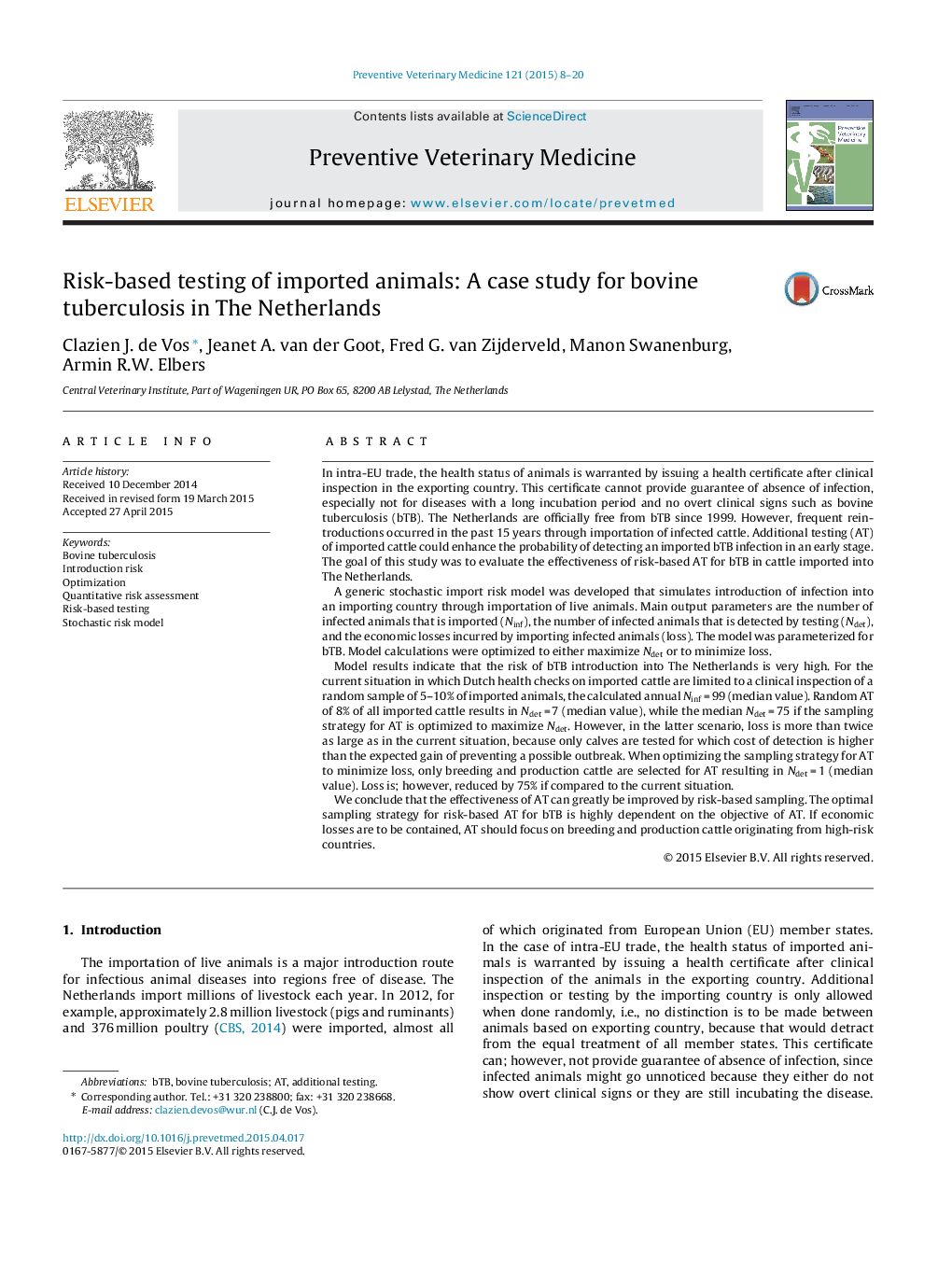| کد مقاله | کد نشریه | سال انتشار | مقاله انگلیسی | نسخه تمام متن |
|---|---|---|---|---|
| 5793011 | 1554168 | 2015 | 13 صفحه PDF | دانلود رایگان |
- The Netherlands import bTB-infected cattle each year, >98% of which are calves.
- Risk-based sampling greatly improves the effectiveness of AT.
- The preferred sampling strategy depends on the objective of AT.
- To minimize economic loss, AT should focus on breeding and production cattle.
- The method applied can be used as a template for other diseases.
In intra-EU trade, the health status of animals is warranted by issuing a health certificate after clinical inspection in the exporting country. This certificate cannot provide guarantee of absence of infection, especially not for diseases with a long incubation period and no overt clinical signs such as bovine tuberculosis (bTB). The Netherlands are officially free from bTB since 1999. However, frequent reintroductions occurred in the past 15 years through importation of infected cattle. Additional testing (AT) of imported cattle could enhance the probability of detecting an imported bTB infection in an early stage. The goal of this study was to evaluate the effectiveness of risk-based AT for bTB in cattle imported into The Netherlands.A generic stochastic import risk model was developed that simulates introduction of infection into an importing country through importation of live animals. Main output parameters are the number of infected animals that is imported (Ninf), the number of infected animals that is detected by testing (Ndet), and the economic losses incurred by importing infected animals (loss). The model was parameterized for bTB. Model calculations were optimized to either maximize Ndet or to minimize loss.Model results indicate that the risk of bTB introduction into The Netherlands is very high. For the current situation in which Dutch health checks on imported cattle are limited to a clinical inspection of a random sample of 5-10% of imported animals, the calculated annual Ninf = 99 (median value). Random AT of 8% of all imported cattle results in Ndet = 7 (median value), while the median Ndet = 75 if the sampling strategy for AT is optimized to maximize Ndet. However, in the latter scenario, loss is more than twice as large as in the current situation, because only calves are tested for which cost of detection is higher than the expected gain of preventing a possible outbreak. When optimizing the sampling strategy for AT to minimize loss, only breeding and production cattle are selected for AT resulting in Ndet = 1 (median value). Loss is; however, reduced by 75% if compared to the current situation.We conclude that the effectiveness of AT can greatly be improved by risk-based sampling. The optimal sampling strategy for risk-based AT for bTB is highly dependent on the objective of AT. If economic losses are to be contained, AT should focus on breeding and production cattle originating from high-risk countries.
Journal: Preventive Veterinary Medicine - Volume 121, Issues 1â2, 1 September 2015, Pages 8-20
